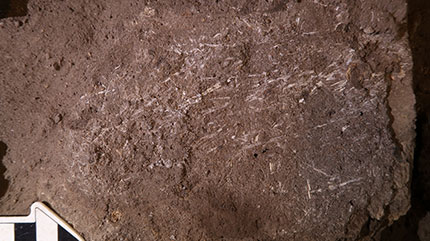
JOHANNESBURG, SOUTH AFRICA—According to a Science News report, archaeologist Lyn Wadley of the University of the Witwatersrand and her colleagues have dated bedding in South Africa’s Border Cave to 200,000 years ago. The beds consisted of bound bunches of grass, such as Guinea grass and red grass, placed over a layer of ash. The ashes are likely to have been old bedding that was burned in firepits found not far from the grass beds found at the entrance to the cave. The fine, powdery ash under the bedding may have been intended to discourage crawling insects. Bits of burned wood and camphor leaves in the ash may have also served as bug repellent. People may have sat on their beds while making stone tools, since small, sharpened stones were also found in the grass and ash. To read about another find from the Border Cave, go to "First Use of Poison," one of ARCHAEOLOGY's Top 10 Discoveries of 2012.










